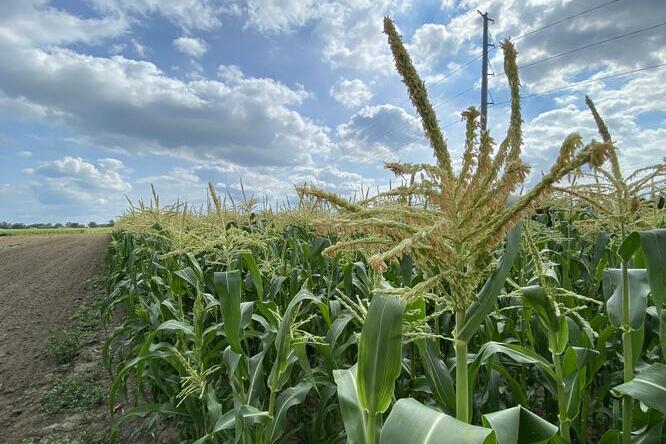Sweet corn yield at the mercy of the environment, except for one key factor

URBANA, Ill. — A new analysis from the University of Illinois Urbana-Champaign and the USDA-Agricultural Research Service (ARS) has identified the top factors accounting for yield variability in processing sweet corn (used for canned and frozen products), including one within the control of processors.
“We used a very robust approach to account for sweet corn yield with field-level data across some 16,000 fields and 27 years. Year and production region were the two most important variables, which makes logical sense. But the third was seed source: the company that developed the hybrids. That's interesting because it’s actually something the industry has a choice over,” said senior study author Marty Williams, ARS ecologist and affiliate professor in the Department of Crop Sciences, part of the College of Agricultural, Consumer and Environmental Sciences (ACES) at U. of I.
The analysis drew from confidential industry data on 67 variables relating to crop genetics, management, weather, and soil factors from fields in the Upper Midwest and Pacific Northwest, where most of the nation’s processing sweet corn is grown. Williams and co-author Daljeet Dhaliwal, who completed his doctorate in the Department of Crop Sciences, used machine learning techniques to narrow down which of the dozens of factors correlated most strongly to yield across nearly 30 years.
Williams said the top two — year and production area — reflect big-picture environmental conditions affecting the crop over time and space. The third, seed company, came as a surprise because the researchers grouped hybrids into nine companies out of necessity. Without grouping the 100-odd hybrids in some way, the already unwieldy dataset would have been even more challenging to analyze and impossible to interpret.
However, the million-dollar question doesn’t have a satisfying answer, as the analysis doesn’t differentiate or rank the seed companies. Williams said there is a reason for that outside the confidentiality agreement.
“We don't know that every company’s hybrids were grown under conditions identical to their competitors,” Williams said. “One company may have higher yields, but it may also be that their hybrids were grown only in more favorable conditions. We know that processors prefer hybrids that perform well under all conditions, particularly less-than-ideal conditions. Still, it’s interesting that seed source linked highly to yield. We can't say exactly why, but seed source is the one thing processors can choose.”
Another striking variable, ranking just below seed company, was high nighttime temperature. Warmer-than-usual nights increase respiration, which offsets gains made during daytime photosynthesis. According to the analysis, sweet corn yield starts taking a hit above 16 degrees Celsius (61 Fahrenheit). Field corn yield, by contrast, doesn’t start declining until nighttime temperatures exceed 21 C.
“Sweet corn is a shallower rooted crop. It's a smaller plant, and it’s more delicate overall than field corn. So that makes some sense,” Williams said. “It could be concerning, because, at least in the Midwest, we are projected to have warmer nighttime temperatures. It's a correlation, but it's a concerning one.”
The same dataset already signaled sweet corn may be in trouble under a warming climate, but the current analysis gives Williams some hope, with at least one variable under processors’ control.
The study, “Sweet corn yield prediction using machine learning models and field-level data,” is published in Precision Agriculture [DOI:10.1007/s11119-023-10057-1].